Steffen Oppel from the UK’s Royal Society for the Protection of Birds (RSPB) recently visited St. Lucia to assist the Department of Forestry with setting up bird counts in order to search for the elusive Semper’s Warbler. This is his story.
![An artist's rendition of the Semper's Warbler (Joseph Smit [Public domain], via Wikimedia Commons)](https://www.birdscaribbean.org/wp-content/uploads/2016/06/Sempers-Warbler-LeucopezaSemperiSmit-450x300.jpg)
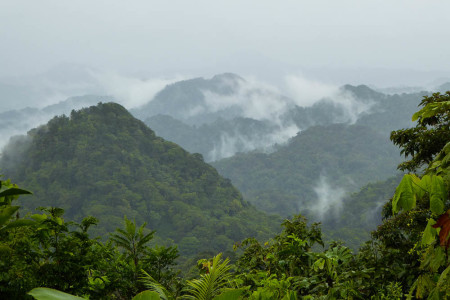
Martin Frost believes he saw a Semper’s Warbler in the early 1990s. This triggered several trips by Martin, Edward Massiah and forestry guides to find the bird in the mid-1990s. Although they were not able to detect the warbler, they never gave up hope that it still exists, noting that there are some very hard-to-access areas that are never visited by humans, and would take days to explore. Edward commented, “If you assume this bird is shy and possibly even ground-dwelling and very local then it is possible it has not yet been located.”
Fast forward to 2016. Unconfirmed reports of warbler sightings continue to trickle in, even as recently as 2014 and 2015, but there have been no major efforts to search for the bird despite a lot of interest in carrying out more searches. With such an appealing subject and always up for a challenge, I was sent to help give our St. Lucian friends the tools to search for one of the country’s rarest species.
Need for a proper search
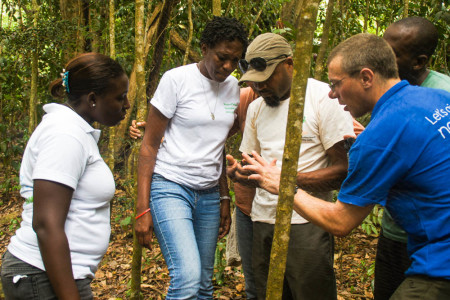
Numerous invasive species introduced by humans, such as rats, cats, and mongooses, roam freely around St Lucia and unfortunately these skillful predators have caused the extirpation of some of the island’s endemic species. However, the Semper’s Warbler is a small, nondescript brownish warbler that hops around the floor of St. Lucia’s dense rainforest, and for this reason it may be easily overlooked. Given also that St Lucia still has extensive tracts of seemingly intact rainforest where the species may persist, it would be foolish to write off the Semper’s Warbler without conducting a systematic search.
The rainforest on St Lucia is so extensive and rugged that a proper search for this tiny, secretive bird would require a little more than just a weekend of intensive birding. Until now, it was not known how long the search would have to be, or what manpower would be required. Therefore in April 2016, my colleague Lyndon John and I facilitated a workshop on St. Lucia to determine the effort needed to search for the Semper’s Warbler.
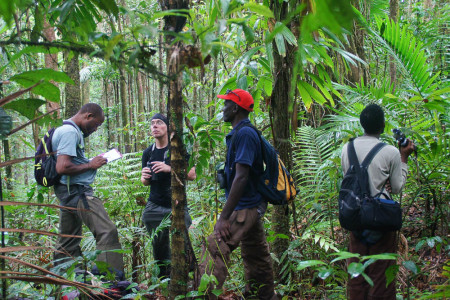
Together with experienced and enthusiastic rangers from the Department of Forestry, we first pored over maps to identify suitable habitats where the species might still persist. We then slogged through rugged hills to assess the feasibility of sufficiently covering the remote areas where intact rainforest still remains. After two weeks, we concluded that a proper search would likely require 84 days to search ten priority areas covering the most natural rainforests on St Lucia. This means that the search team will need to be skilled and hardy, able to cope with venomous snakes, rugged terrain, and will need to use equipment such as mistnets, sound recorders and camera traps to comb the hills for this small and elusive bird.
Surveying for endemics whilst in the forest
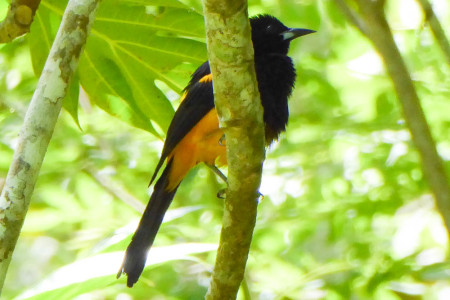
During the workshop, we established 20 permanent sampling stations in order to count birds. Conducting regular annual surveys of all forest birds might increase the chance of detecting a Semper’s Warbler while also providing valuable information on other endemic species that are still more common, such as the St. Lucia Black Finch (Melanospiza richardsoni), the St. Lucia Oriole (Icterus laudabilis), or the White-breasted Thrasher (Ramphocinclus brachyurus).
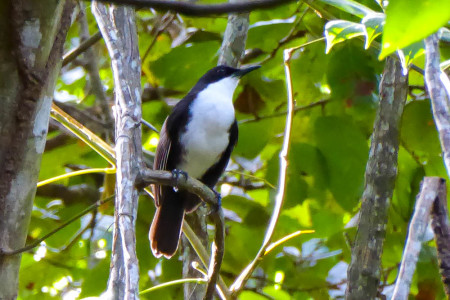
While no Semper’s Warblers were detected during our field work, the team emerged inspired and hopeful that the species may still persist in some of the remote valleys and ridges off the beaten paths of St. Lucia’s lush interior. Forestry Officer, Pius Haynes remarked, “We at the Forestry Department in St. Lucia are highly confident the species may still persist in some remote pocket of our rainforest. The rediscovery of the iconic Semper’s warbler would be a remarkable thing as it would boost our conservation efforts and showcase the value of our native biodiversity. The Forestry Department in St. Lucia was very happy to collaborate with the RSPB in executing a training workshop aimed at developing a feasible strategy to undertake searches for the Semper’s warbler. We were also very happy to receive much needed technical assistance and equipment to better undertake bird surveys. We are confident that the training and equipment received will go a long way in assist us in our quest to rediscover the Semper’s warbler.”
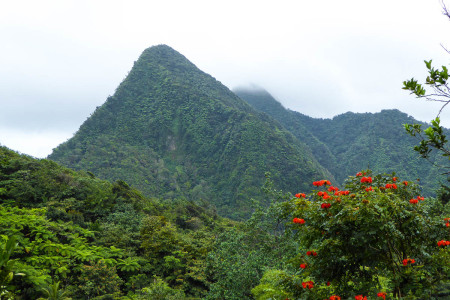

It is wonderful to hear of this work. I worked briefly on St Lucia in the early 1970s and did not find Semper’s Warbler, but did not penetrate the remote areas described here. I wish the team all success!
I am happy to read about the efforts of the Department trying to find the Semper’s Warbler. I worked with the Department for over thirty years and spent well over ten years in the field and never saw the bird. This would be a dream come true to find the bird, i would like to join the Team when next going out on a search.
Congrats to all for taking on this challenge! I believe your efforts will be far reaching. I believe managing invasive is a chicken an the egg situation. Take care of the eggs and we will get more chickens. Finding your warbler will reinvigorate efforts at managing invasives.